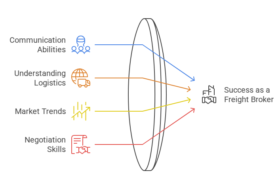Daimler’s European business has strayed outside its normal comfort zone, designing a trailer optimized for maximum efficiency with the company’s own Actros tractor.
The Aerodynamics Truck and Trailer, unveiled at the International Motor Show this week, will reduce a semi-trailer’s fuel consumption to less than 25 litres per 100 kilometres, officials said, representing a fuel savings of 4.5%. Wind resistance has been reduced by 18% through the design, which was developed in partnership with European trailer manufacturer Schmitz Cargobull.
The fuel savings take into account a gross weight of 40 tonnes in a five-axle configuration that is representative of mainstream European road transport applications. When running 150,000 kms per year, the tractor-trailer combo could reduce fuel consumption by some 2,000 litres per year.
“At the same time, CO2 emissions into the environment are reduced by more than five tonnes – all with just one semi-trailer,” said Georg Weiberg, head of truck product engineering with Daimler Trucks.
Also introduced at the show was a solo (straight) truck for long-distance and distribution transport with purported fuel savings of 3% at highway speeds.
The Aerodynamics Truck and Trailer spent more than 2,600 hours in the wind tunnel to validate Daimler’s fuel-saving claims. Based on those projected fuel savings, Weiberg said that if the entire German trucking industry adopted the Aerodynamics Truck and Trailer, more than 300 million litres of diesel would be saved each year – equal to the amount transported by a full super-tanker and effectively reducing 800,000 tonnes of CO2 from the environment.
The main contributor to the fuel savings is a 400-millimetre boat tail that’s credited with a 7% improvement in aerodynamics. Weiberg said the European Union commission in Brussels – which oversees length restrictions – is recommending an increase to the maximum allowable length to be extended by 500 mm to accommodate such boat tails.
Daimler plans to conduct on-road testing of the new concept in the coming months to measure real-world fuel consumption figures. It will be selecting customers to test the new semi-trailer on the road in 2013 and plans to roll out the combination commercially soon thereafter.
While the specially-designed trailer could cost as much as 6,000 Euros more than today’s designs, Daimler is projecting a payback of within two years. But don’t expect to see this tractor-trailer combination on North American roads anytime soon. There are complications in applying the technology to our market, notably the rearward location of the trailer axles and the wider gap between the tractor and trailer. Still, the very idea of a truck manufacturer designing a trailer for optimum performance with its own vehicles is interesting and something that could conceivably be applied in North America should the European experiment pay off.







